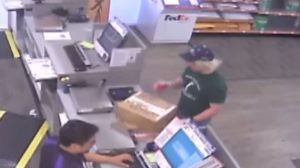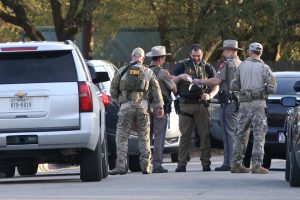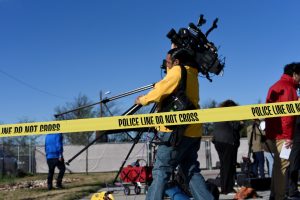
By Diane Bartz and Jeffrey Dastin
WASHINGTON (Reuters) – The United States Postal Service should have more flexibility to raise rates for packages, according to recommendations from a task force set up by President Donald Trump, a move that could hurt profits of Amazon.com Inc and other large online retailers.
The task force was announced in April to find ways to stem financial losses by the service, an independent agency within the federal government. Its creation followed criticism by Trump that the Postal Office provided too much service to Amazon for too little money.
The Postal Service lost almost $4 billion in fiscal 2018, which ended on Sept. 30, even as package deliveries rose.
It has been losing money for more than a decade, the task force said, partially because the loss of revenue from letters, bills and other ordinary mail in an increasingly digital economy have not been offset by increased revenue from an explosion in deliveries from online shopping.
The president has repeatedly attacked Amazon for treating the Postal Service as its “delivery boy” by paying less than it should for deliveries and contributing to the service’s $65 billion loss since the global financial crisis of 2007 to 2009, without presenting evidence.
Amazon’s founder Jeff Bezos also owns the Washington Post, a newspaper whose critical coverage of the president has repeatedly drawn Trump’s ire.
The rates the Postal Service charges Amazon and other bulk customers are not made public.
“None of our findings or recommendations relate to any one company,” a senior administration official said on Tuesday.
Amazon shares closed down 5.8 percent at $1,669.94, while eBay fell 3.1 percent to $29.26, amid a broad stock market selloff on Tuesday.
The Package Coalition, which includes Amazon and other online and catalog shippers, warned against any move to raise prices to deliver their packages.
“The Package Coalition is concerned that, by raising prices and depriving Americans of affordable delivery services, the Postal Task Force’s package delivery recommendations would harm consumers, large and small businesses, and especially rural communities,” the group said in an emailed statement.
Most of the recommendations made by the task force, including possible price hikes, can be implemented by the agency. Changes, such as to the frequency of mail delivery, would require legislation.
The task force recommended that the Postal Service have the authority to charge market-based rates for anything that is not deemed an essential service, like delivery of prescription drugs.
BAD NEWS FOR AMAZON
“Although the USPS does have pricing flexibility within its package delivery segment, packages have not been priced with profitability in mind. The USPS should have the authority to charge market-based prices for both mail and package items that are not deemed ‘essential services,'” the task force said in its summary.
That would be bad news for Amazon and other online sellers that ship billions of packages a year to customers.
“If they go to market pricing, there will definitely be a negative impact on Amazon’s business,” said Marc Wulfraat, president of logistics consultancy MWPVL International Inc.
If prices jumped 10 percent, that would increase annual costs for Amazon by at least $1 billion, he said.
The task force also recommended that the Postal Service address rising labor costs.
The Postal Service should also restructure $43 billion in pre-funding payments that it owes the Postal Service Retiree Health Benefits Fund, the task force said.
Cowen & Co, in a May report, said the Postal Service and Amazon were “co-dependent,” but that Amazon went elsewhere for most packages that needed to arrive quickly.
Cowen estimated that the Postal Service delivered about 59 percent of Amazon’s U.S. packages in 2017, and package delivery could account for 50 percent of postal service revenue by 2023.
The American Postal Workers Union warned against any effort to cut services. “Recommendations would slow down service, reduce delivery days and privatize large portions of the public Postal Service. Most of the report’s recommendations, if implemented, would hurt business and individuals alike,” the union said in a statement.
Amazon, FedEx Corp and United Parcel Service Inc did not return requests for comment.
(Reporting by Diane Bartz and Jeffrey Dastin; editing by Bill Berkrot)







